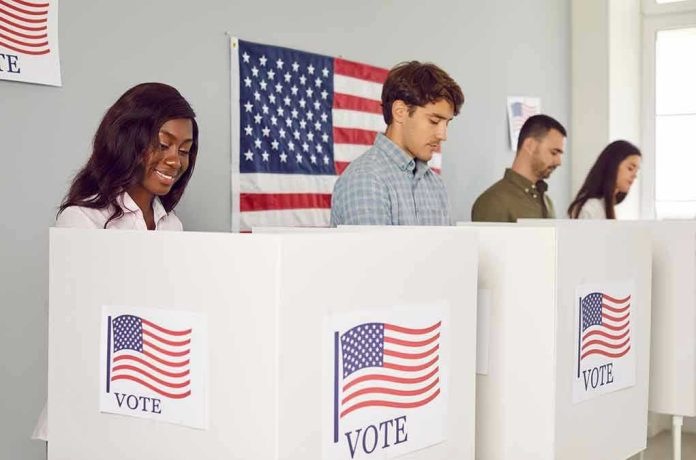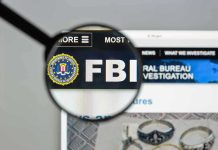
President Trump’s bold move to eliminate mail-in ballots and voting machines for the 2026 midterms has ignited a fierce national debate about election integrity, state sovereignty, and the future of American democracy.
Story Snapshot
- Trump announces plan for executive order targeting mail-in ballots and voting machines ahead of 2026 midterm elections.
- Move stirs controversy over federal versus state authority in election administration.
- Supporters say this will restore honesty and public trust in U.S. elections.
- Legal and constitutional challenges expected as stakeholders prepare for a major battle.
Trump’s Push to Restore Paper Ballots and Election Integrity
On August 18, 2025, President Donald Trump declared his intent to sign an executive order that would eliminate mail-in ballots and electronic voting machines for the 2026 midterms. Trump framed this initiative as a necessary step to “bring HONESTY” back to the American electoral process, arguing that current mail-in and machine-based voting methods are inherently vulnerable to fraud and inaccuracies. He promised to lead a national movement to return to paper ballots, a demand that resonates with millions of Americans frustrated by years of questionable election practices and perceived lack of transparency.
The announcement arrives more than a year ahead of the midterms, signaling a preemptive effort to shape how elections are administered. Trump’s assertion that states are “agents” of the federal government in election matters marks a significant shift, challenging a system where states historically control election procedures. The executive order, if enacted, would face immediate legal hurdles, as state officials and advocacy groups prepare to resist what they see as unprecedented federal overreach. The debate highlights deep divisions over the best path to securing the ballot box.
The Battle Over State vs. Federal Authority in Elections
U.S. elections have always been decentralized, with each state setting its own rules for ballot access and counting. This tradition was upended during the COVID-19 pandemic, when mail-in voting expanded dramatically, fueling partisan disputes over security and reliability. While Trump and his supporters have long alleged—without legal proof—that mail-in ballots and voting machines are open to abuse, courts and bipartisan commissions have rejected claims of widespread fraud. Nevertheless, the new administration is pressing ahead, reflecting core conservative concerns about election integrity and government accountability.
Stakeholders are now preparing for a constitutional showdown. State election officials, tasked with administering the vote, are likely to push back against federal intervention, defending their authority under the Constitution. Meanwhile, voting rights groups and election technology companies brace for policy changes that could upend established procedures and business models. Congress and the judiciary are poised to play pivotal roles, either advancing or curtailing the executive order depending on how legal challenges unfold. This confrontation underscores the broader struggle over how much power Washington should wield over voting systems nationwide.
Implications for Voters, States, and the Nation
If the executive order takes effect, the near-term impact would be legal chaos, confusion among voters and officials, and heightened political polarization. The lives of millions who rely on mail-in voting—especially seniors, military personnel overseas, and the disabled—would be disrupted. Election technology vendors face existential threats, and states would scramble to implement paper-only voting in a compressed timeline. Economic costs and logistical hurdles could be enormous, with the risk of disenfranchising legitimate voters and undermining faith in the process.
Trump says he’ll sign order targetting mail-in ballots, voting machines ahead of 2026 midterms https://t.co/j9nfR9C9sF
— Breaking News (@jooilong) August 18, 2025
In the long run, this move could fundamentally reshape the American election landscape, setting a powerful precedent for federal intervention in state-run elections. It would energize Trump’s base, who have long demanded stricter controls, but also galvanize opponents who see it as an attack on democratic norms. Legal scholars warn that the executive order’s sweeping claims of federal authority will almost certainly end up before the Supreme Court. Regardless of outcome, the nation faces a pivotal test of its commitment to both secure elections and constitutional balance. Limited data is available on implementation details, as the official executive order text has not yet been released.
Expert Perspectives and the Road Ahead
Election experts and bipartisan observers maintain that there is no credible evidence of widespread fraud in mail-in or machine voting, and that the U.S. Constitution grants states the primary role in election management. Trump’s move is hailed by supporters as a common-sense defense of democracy, but criticized by opponents as partisan overreach. As legal battles loom and public debate intensifies, the outcome will have profound consequences for the future of election integrity, federalism, and trust in American institutions.
Sources:
ABC News, “Trump says he will lead ‘movement’ to end mail-in voting,” August 18, 2025.
Le Monde, “Trump takes aim at mail-in ballots ahead of 2026 midterms,” August 18, 2025.












